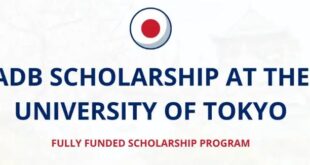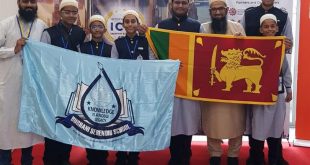Sixteen Iranian researchers break new grounds in science and technology
During the Iranian calendar year, 1392 (March 21, 2013 to March 21, 2014), the world of science and technology witnessed major breakthroughs made possible through the endeavors of Iranian scientists. These researchers made great progress in different scientific fields in various parts of the world, which made them a cause of honor for every Iranian anywhere in the world.
Scientific achievements of a group of researchers of Iranian origin in the United States, Australia and the UK in such scientific fields as medicine, energy, electricity and computer, helped these human sciences to move a step forward. Among their achievements one can point out the production of hepatic cells from skin cells, production of metamaterials, as well as the discovery of a whole new category of antibiotics.
The following report offers a brief glimpse into their achievements.
*Controlling tablets and smartphones using the power of mind
South Korean technology giant, Samsung, has been always looking for a way to make it possible for users to control such electronic devices as cellphones and tablets with the power of their mind and thoughts.
To find a solution, it has been helped by an Iranian researcher at Texas University in a bid to increase the amount of interaction that users can have with mobile devices.
Roozbeh Jafari, an associate professor of electrical engineering at the University of Texas at Dallas, is currently doing a research on how to enable people to use their mind and thoughts in order to get an application running, choose a contact, select a music file or even to turn their Galaxy Note 10.1 table on or off.
Such a progress will be a great help to people with motion disorders as it can allow them to come in contact with the world around them.
*Generating electricity using power windows
An Iranian researcher at University of Wollongong in New South Wales, Australia, has come up with a new idea for the generation of electricity from solar power.
According to the concept of “power windows,” Professor Farzad Safaei has designed a wind turbine which will have the least detrimental effect on the environment around it. Instead of having a set of big blades which would rotate in the direction that wind blows, the new wind turbine is made of small blades which revolve slowly in the direction of wind.
Another advantage of these power windows is that, if more electricity is needed, more panels can be added to them in order to contain a higher amount of wind energy.
*A new way to fight obesity
Dr. Mohammad Hajihosseini, a researcher at the UK’s College of West Anglia, has come one step closer to production of a diet pill which can prevent people from becoming overweight or obese.
The pill can, in effect, reorient the neural circuits within the brain in such a way as to control a person’s appetite.
He has been able in his studies to identify a certain population of stem cells which are able to generate neurons that regulate and control appetite in the brain of young and adult mice. This discovery can pave the way for finding a solution to eating disorders, including obesity.
*Successful conversion of skin cells into liver cells
Dr. Milad Rezvani, the Iranian researcher at the University of California – San Diego, has found a new way to turn skill cells into mature and efficient hepatic cells. The results of his research have revived new hopes for millions of patients suffering from hepatic failure.
The method presented by him shows that even when the new cells were grafted into genetically modified laboratory animals with liver failure, those cells continued to grow and were not destroyed by the recipient’s body.
*Three Iranian researchers offer mathematical model to simulate function of a bacterium
Massoud Rostami, Hossein Mosallaei, and Davood Ansari are three Iranian researchers of Northeastern University of Boston, the United States, who have come up with a new way which will finally reduce the cost and time needed to simulate electronic, optical and electromagnetic systems.
They have introduced and completed a mathematical method known as “parametric hierarchical matrix method” in order to find a solution to the problem of how light interacts with molecular structures in a specific kind of bacterium. The new method makes rapid calculations for complex structures quite possible.
According to Ansari, the new method provides a powerful means of calculation which can be used by chemists to study and simulate the interaction between the light and molecular structures. As such, the new method facilitates the study of how light interacts with molecular structures.
*Iranian scientist wins international electrical engineering award
Professor Nader Engheta, the Iranian scientists and professor of the University of Pennsylvania, has won the 50th international Benjamin Franklin award for 2013.
He has been given the important international award for his researches, which were described as being aimed at “outstanding electrical engineering design, innovation and problem solving.”
This award is given every year to a member of the Institute of Electrical and Electronics Engineers (IEEE) for outstanding technical innovation and technological contributions that have significant practical application.
*Research on metamaterials
Nader Engheta scored another achievement last year. He, helped by a group of researchers, carried out studies on a special category of materials which can help to make “invisibility cloak” a reality. He has been involved in meticulous mathematical calculations which can pave the way for the introduction of a new generation of analog computers.
Metamaterials are a new category of complex substances with unconventional electromagnetic properties in their structure. The main issue that makes such materials seem unusual is their negative refractive index, which means that such materials can create negative refraction of light; that is, they can reflex light in a direction opposite to that of normal materials.
On the other hand, such materials can be used to produce a new generation of analog computers because metamaterials cause light waves to create mathematical curves in which the derivative, will indicate the deviation of the curve in different points, while the integral explains the area which falls right beneath the curve.
*Discovering genetic code of cholera
A group of American researchers headed by an Iranian scientist have revealed the role of genetic factors in susceptibility to cholera.
Their findings can lead to the introduction of a new treatment for this potentially lethal disease and also help to facilitate prevention.
Parisa Sabeti, associate professor of organismic and evolutionary biology at Harvard University, has based her work on genetic data gathered from hundreds of people in Bangladesh.
In this way, she has been able to identify a number of areas in the genome — some are responsible for certain immune system functions, others are connected to fluid loss — that appear to be related to cholera resistance.
*Iranian researcher presents a model to facilitate human traffic
Inspired by nature and the natural life pattern of ants, Dr. Majid Sarvi, an associate professor at Australia’s Monash University, has produced a model for emergency evacuation of humans from large buildings and stadiums under emergency circumstances.
The Iranian lead researcher of Monash University has conducted meticulous studies on nature for better understanding of human traffic. The solution offered by his model can be used in large-scale emergency situations to save the life of humans.
*Discovering a new category of antibiotics
Shahriar Mobashery, the Iranian researcher of the United States’ University of Notre Dame, has discovered a new category of antibiotics which can be used to fight various resistant strains of bacteria.
The new class of antibiotics, called oxadiazoles , has been discovered through computerized screening. The new medications have raised hopes for the treatment of diseases caused by resistant strains of Staphylococcus Aureus as they have successfully overcome S. Aureus’ resistance to methicillin in mice models.
, has been discovered through computerized screening. The new medications have raised hopes for the treatment of diseases caused by resistant strains of Staphylococcus Aureus as they have successfully overcome S. Aureus’ resistance to methicillin in mice models.
*A solution to reduce heating in electronic devices
Dr. Pedram Khalili Amiri, the Iranian researcher of University of California, Los Angeles (UCLA), and his colleagues have found a new way to reduce the heat that is produced in electronic devices such as laptops and smartphones.
Khalili and his colleagues at UCLA Henry Sa mueli School of Engineering and Applied Science have made major improvements in computer processing using an emerging class of magnetic materials called "multiferroics," and these advances could make future devices far more energy-efficient than current technologies.
mueli School of Engineering and Applied Science have made major improvements in computer processing using an emerging class of magnetic materials called "multiferroics," and these advances could make future devices far more energy-efficient than current technologies.
*New generation of smart curtains based on Iranian researcher’s idea
Ali Javey the Iranian researcher of University of California at Berkeley has come up with a new method to make light-sensitive materials which are used in various industries.
Javey is an associate professor of Electrical Engineering and Computer Sciences in University of California at Berkeley. He and his colleagues have made a new material which shows rapid reaction to light.
One of the applications of the new technology is production of smart curtains which can automatically open and close during the day. Other potential applications include light-driven motors and robotics that move toward or away from light.
*Religious people have healthier brains
A team of American researchers, including an Iranian researcher, have announced that religious activities that reduce stress are associated with a healthier brain function.
“One of the worst killers of brain cells is stress,” said Dr. Majid Fotuhi, founder and chief medical officer of NeurExpand and a lecturer at Harvard Medical School, as well as a consultant to the Beautiful Minds project.
He added, “Stress causes high le vels of cortisol, and cortisol is toxic to the hippocampus. One way to reduce stress is through prayer. When you’re praying and in the zone you feel a peace of mind and tranquility.”
vels of cortisol, and cortisol is toxic to the hippocampus. One way to reduce stress is through prayer. When you’re praying and in the zone you feel a peace of mind and tranquility.”
*Latest findings of an Iranian researcher about learning
Researchers at Canada’s University of British Columbia, working in cooperation with the Iranian researcher, Mahsan Mobasser, have identified important molecular changes in human brain which take place during learning and memory functions.
The research shows that learning stimulates our brain cells in a manner that causes a small fatty acid to attach to delta-catenin, a protein in the brain. This biochemical modification is essential in producing the changes in brain cell connectivity associated with learning.
*Iranian scientist offers solution for moving paralyzed limbs
 Researchers of Cornell University lead by Iranian scientist Maryam Shanechi are trying to make brain implants to overcome paralysis of human limbs.
Researchers of Cornell University lead by Iranian scientist Maryam Shanechi are trying to make brain implants to overcome paralysis of human limbs.
In a work inspired partly by the movie "Avatar," one monkey could control the body of another monkey using thought alone by connecting the brain of the puppet-master monkey to the spine of the other through a prosthesis.
a work inspired partly by the movie "Avatar," one monkey could control the body of another monkey using thought alone by connecting the brain of the puppet-master monkey to the spine of the other through a prosthesis.
Dr. Shanechi’s laboratory is currently planning to produce more complicated brain-machine interfaces which will enable them to make more effective prostheses. Such machines can be used to control an artificial or natural limb.
Source : http://www.iranreview.org
Post Disclaimer | Support Us
Support Us
The sailanmuslim.com web site entirely supported by individual donors and well wishers. If you regularly visit this site and wish to show your appreciation, or if you wish to see further development of sailanmuslim.com, please donate us
IMPORTANT : All content hosted on sailanmuslim.com is solely for non-commercial purposes and with the permission of original copyright holders. Any other use of the hosted content, such as for financial gain, requires express approval from the copyright owners.
 Sri lanka Muslims Web Portal Sri Lanka Muslims News Center
Sri lanka Muslims Web Portal Sri Lanka Muslims News Center



